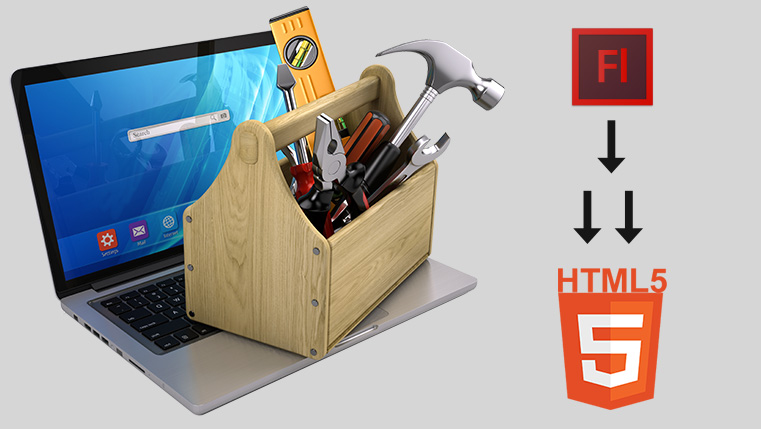What You Need to Know About Delivering SCORM on Mobile

Mobile learning has been the talk of the town for a while now. Learners are readily embracing the technological benefits of using their mobile devices to access learning. If you have SCORM content, there’s a lot of misleading information on the Internet on how SCORM can, and should, work on mobile devices.
Today, let us see what it takes to implement SCORM on mobile, and also demystify a couple of misconceptions on the subject.
How is reporting affected when SCORM courses are viewed on mobile devices?
A common question I see doing the rounds is whether the reporting is affected when SCORM courses are viewed on a mobile device. Reporting is mostly done through a Learning Management System (LMS), which also monitors a learner’s performance efficiently. One thing you must understand, that a Cloud-based LMS (such as MOODLE) needs Internet connectivity for SCORM to communicate data (tracking and monitoring) back to the LMS. If the mobile device – the device that is viewing the SCORM content – is connected to the internet, then there will occur no problem whatsoever with the reporting functionality. However, if the mobile device loses the data connection, then the reporting may not be as precise as it usually is.
Common myth about SCORM not playing on mobile
In today’s learning scenario, learners are interested in taking courses from their Smartphones and tablets more than ever. This means that you must ensure that mobile learning is an important part of your training program. What about the LMS? Does it have to be mobile learning-compatible as well? The short answer is, yes. Your LMS becomes mobile-friendly if the SCORM content is designed and exported appropriately, making the SCORM courses easily viewableon mobile devices. (Read more about how you can make your LMS mobile compatible.)
When your LMS is mobile compatible, your learners will be provided with optimal learning experiences. This results in better training completion rates, maximum utilization of training resources, and better returns on your training investments.
How does Flash have an impact on the ability to use SCORM on Mobile?
If you have any SCORM courses that have been created using Adobe Flash, then it’s likely they won’t run on mobile devices. Flash-based courses are now obsolete, and almost every modern browser today has abandoned support for Flash.
What could be done with your repository of Flash-based SCORM courses that don’t work on mobile? Well, you can always convert these legacy courses to HMTL5. HTML5-based courses are widely supported by modern browsers. It is the most preferred choice for L&D professionals when they want to convert their legacy courses.(Here’s an informative blog on how to convert Flash courses to HTML5).
Criteria for choosing the right authoring tool
Picking the right authoring tool is essential, once it is established that the LMS can deliver an optimal mobile experience for SCORM courses. Most authoring tools today give you the ability to create mobile learning. However, for the best mobile experience, you must carefully consider your authoring tool options. Some tools may allow you to design content for a fixed size/screen, while others may give you the ability to scale the size of the browser (often called as Responsive Design).
Responsive design enables you to create a single e-learning course that automatically adapts to any browser or device. This allows every learner to benefit from your e-learning course, without having to worry about the screen size and resolution.Ensure that you always choose authoring tools that come built-in with Responsive Design support, because your learners are multi-device users and you would want to design mobile learning that’s optimum for each of their devices.
Breaking hour-long training videos into smaller parts for easier consumption
Most of the time, learners are on the move or on the go and subsequently have shorter, more frequent gaps than longer less frequent gaps. Also, if you want your SCORM courses to be accessed by all your learners – including the sales team spread all across the world – then, you must make sure that your courses are accessible even in the most remote of locations.
When done right, mobile devices can act as nifty little offline learning portals for your learners. If your learners access learning from locations that experiences low-connectivity issues, then you can allow them to download mobile learning modules for offline access. A good way of supporting offline viewing of SCORM mobile learning courses is to chunk any hour-long courses to short, bite-sized learning. Your mobile learning content should be designed in chunks with small pieces of content that can be digested, anywhere between 5 and 15 minutes.
Before you even begin with the SCORM-on-Mobile strategy,the important thing to remember is to have your LMS platform mobile-compatible, because your LMS is the one that takes the entire training and L&D load.Also, be wise when choosing an authoring tool for creating mobile learning. Choose one that allows you to develop mobile learning that can run on different device sizes, to avoid rework and cost repercussions.
I hope this blog has given you enough information about SCORM implementation for mobile platforms. Have you tried to get SCORM working on mobile devices? What was your experience like? Share it with us.





